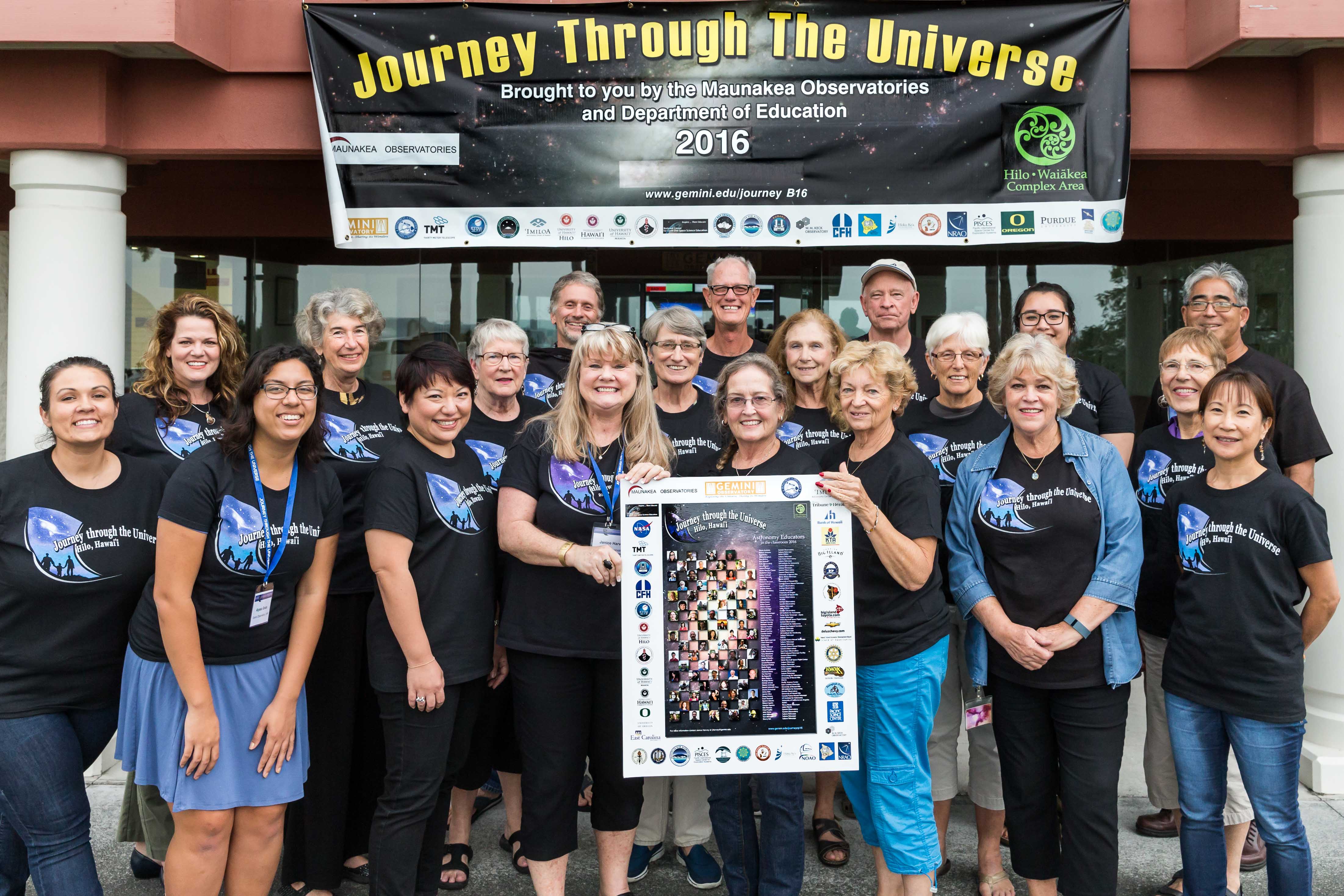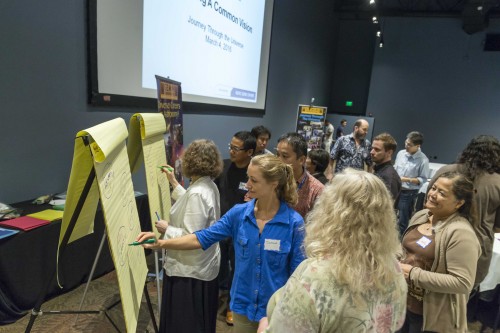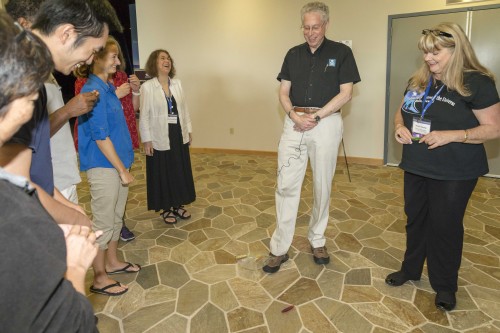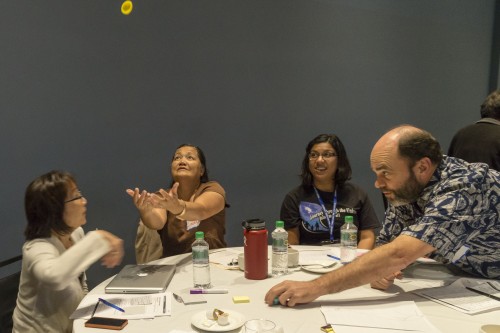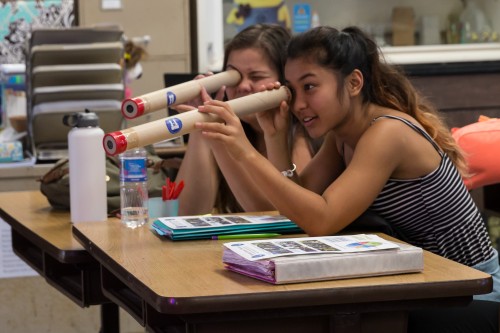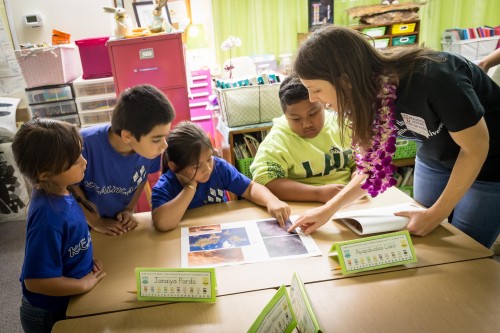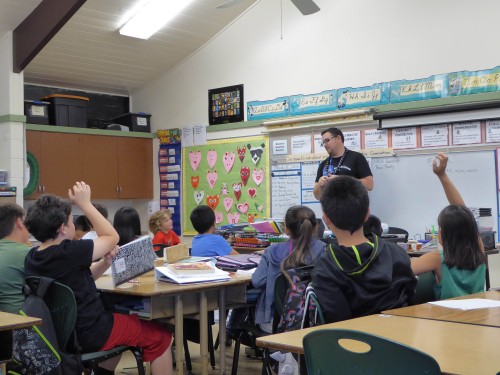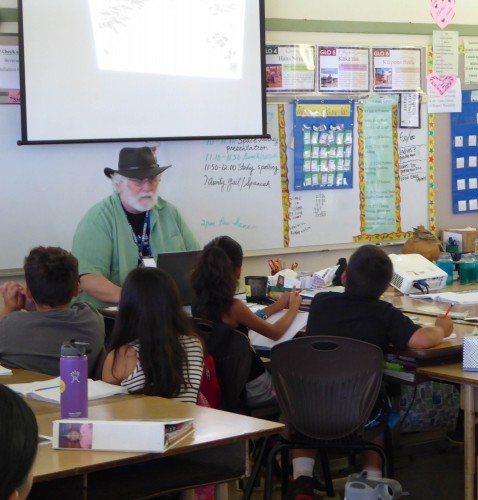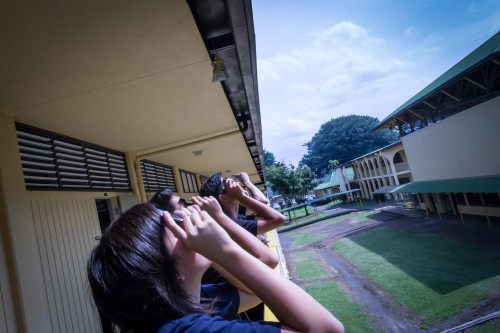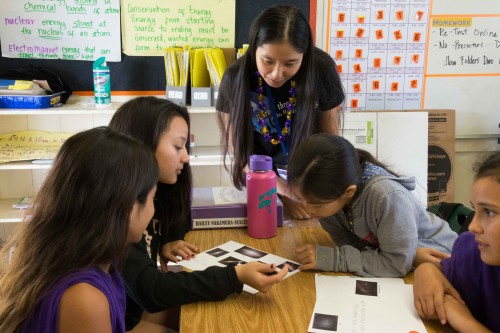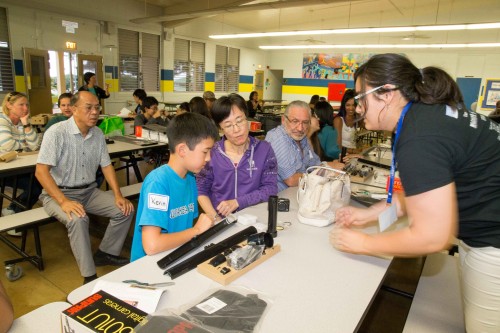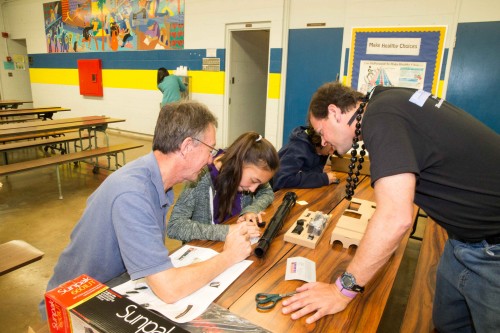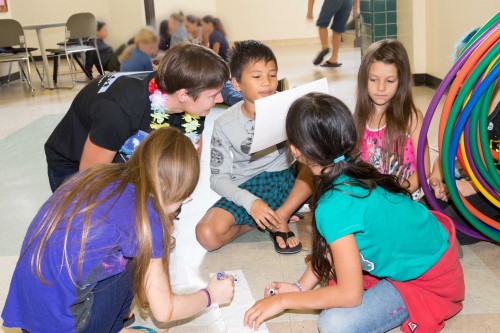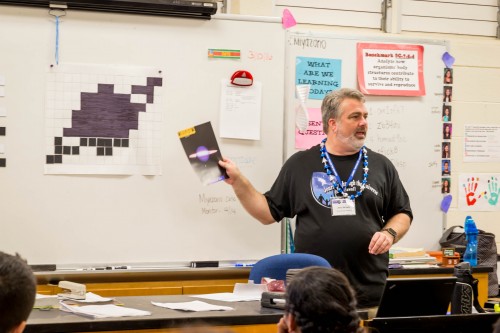- Date: 7 Mar 2016
- Comments: (0)
- Categories: For Everyone, Images/Videos, Outreach
Journey Through the Universe 2016
During the week of March 7-11, 83 observatory professionals consisting of astronomers, engineers, astronomy educators, and other observatory staff, will bring their passion for science into hundreds of local Hawai‘i Island classrooms as a part of Gemini Observatory’s flagship annual outreach program, Journey Through the Universe.
Now in its 12th year in local schools, Journey Through the Universe week is a collaboration with the Department of Education Hilo-Waiākea Complex, Hawai‘i Island business community, Maunakea Observatories and NASA. For a full list of sponsors, astronomy educators, and events, visit our Journey through the Universe page.
Check back for periodic updates throughout the week.
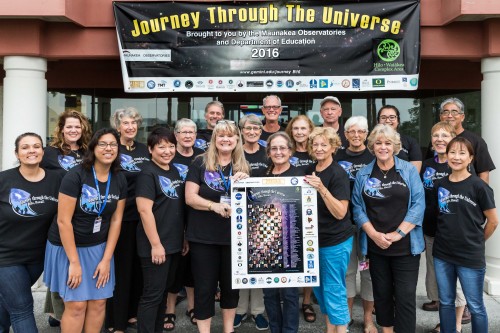
The 2016 Journey Through the Universe community Ambassador volunteers gather to prepare for a week of educational fun. Ambassadors are an important part of the program and support our local classroom presenters as well as students and their education.
Friday, March 4th – Science Communication Workshop
Several dozen local educators and astronomy professionals joined together for a workshop at Hilo’s ‘Imiloa Astronomy Center on Friday, March 4th. The workshop, led by world-renowned educator Dr. Dennis Schatz, shared how to effectively communicate science to learners of all ages using research on how students learn science — and a good dose of fun, hands-on activities!
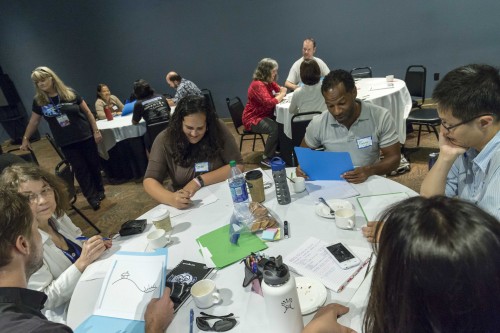
Participants engaged in an activity that modeled how prior knowledge and assumptions can obscure interpretation.
Monday-Welcome Reception
Today was the first day of classroom visits, and later in the evening, the Hawaii Island Chamber of Commerce and the Japanese Chamber of Commerce and Industry held a Welcome Reception at the Hilo Yacht Club for all of the Journey Through the Universe participants.
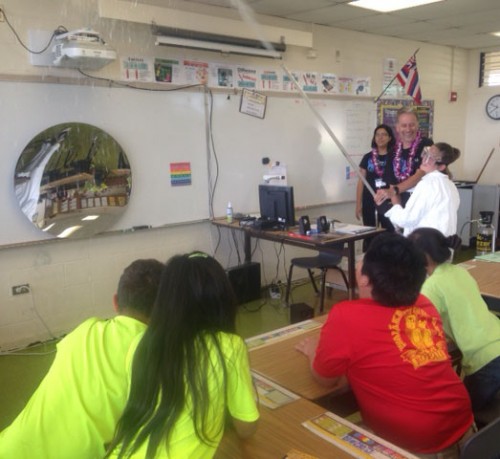
Gemini staff Peter Michaud and Alyssa Grace (black shirts, right to left) engaged students at Waiākea Elementary in an activity that allowed a student to clean a telescope mirror with dry ice snow, just like observatory staff perform at the telescope.

NASA Solar System Exploration Research Virtual Institute (SSERVI) Director Yvonne Pendleton (left) handing Journey Through the Universe program coordinator Janice Harvey a significant donation to the Journey Through the Universe program from NASA SSERVI.
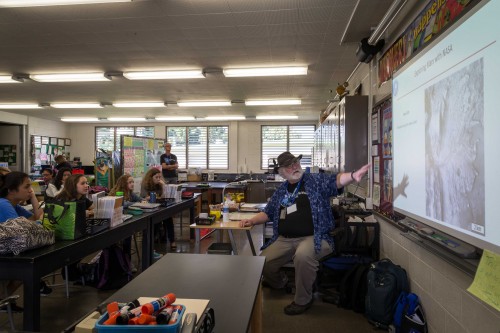
NASA Astronomer Brian Day at Hilo Intermediate shares details on Mars and its features with students.
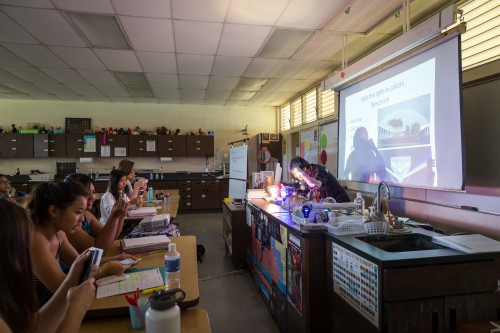
Thirty Meter Telescope-Japanʻs Yutaka Hayano demonstrates spectroscopy for students at Hilo High School.
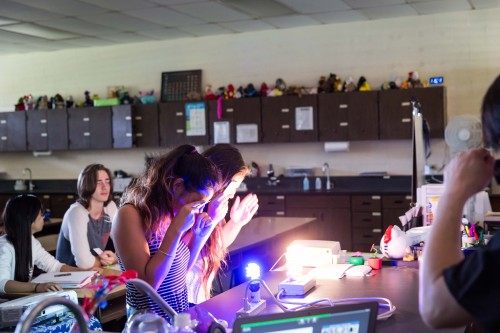
Hilo High students observe various light sources through filters that separate the light into a rainbow of colors.
Tuesday-Viewing the Partial Solar Eclipse
Gemini thanks the Canada-France-Hawai‘i Telescope for their continued support of the Journey Through the Universe program. This is the first year for the expansion of the program to incliude Honoka‘a schools! On Tuesday, March 8th, NASA scientist Brian Day shared his expertise on eclipses in a talk titled, “In the Shadow of the Moon.” The talk, at the Honoka‘a High School Auditorium was followed by eclipse viewing at the Lava Lava Beach Bar in Waikoloa.
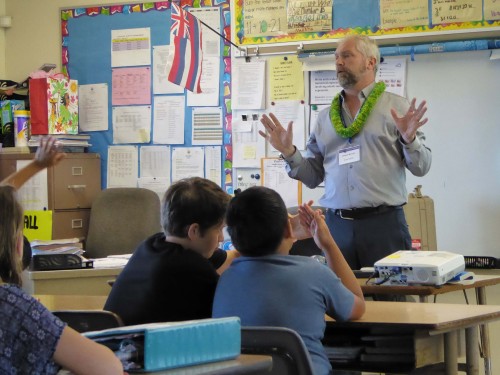
NASA Scientist Joe Minafra shares rocks from space with a class of 6th graders at Honoka‘a Elementary School.
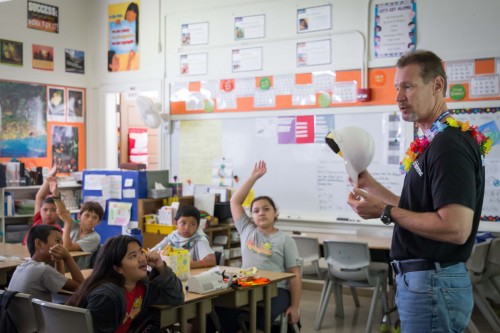
Gemini Safety Manager John Vierra brought equipment that technicians might wear to keep them safe while they work on the telescope.
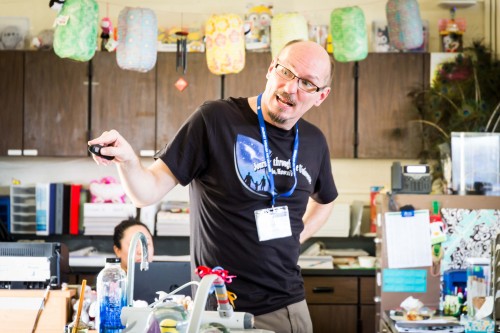
University of Oregon Professor Scott Fisher at Hilo High School describing how telescopes collect light.

Evan Sinukoff (left) from the UH Institute for Astronomy and Virginia Aragon-Barnes from the Thirty Meter Telescope directed students on how to “pace” the Universe, using their steps as measurements to each planet in the Solar System.
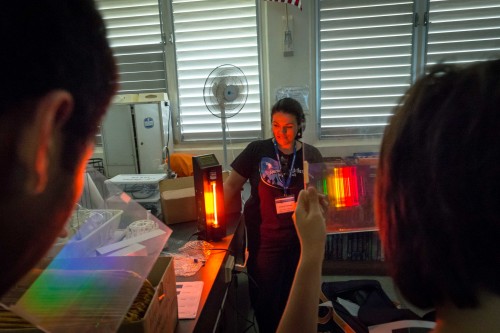
Barnes encouraged students to investigate how the light from assorted gas lamps are broken up into a rainbow of colored bands when viewed through a filter.
Wednesday-A Hard Rainʻs A-Gonna Fall
The day started off a little wet and rainy, but nothing could dampen the moods of our classroom visitors!
On March 9th, at the University of Hawai‘i at Hilo, renowned NASA scientist Brian Day from the Solar System Exploration Research Virtual Institute (SSERVI) shared his expertise on Near Earth Objects (NEO) and how each year the Earth experiences multiple near misses. However, now, for the first time in the history of life on Earth, we have the capability to do something about it. This free, public talk was an excellent opportunity for our community to get a taste of what our local students experience during the week of Journey Through the Universe.

Gemini Astronomers Olivier Guyon and Kathy Roth (left to right) modeled how light hits orbiting bodies for students at Waiākea High School.
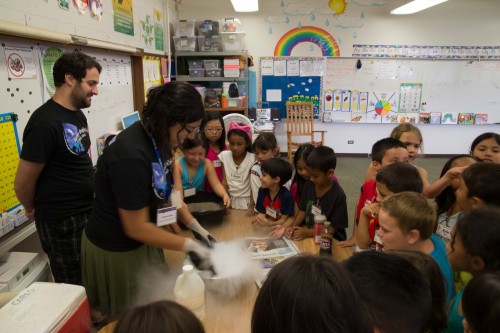
Subaru Astronomer Julien Lozi (left, black shirt) and Gemini Public Information and Outreach (PIO) staff Alyssa Grace (right, black shirt), modeled comets for students at Waiākeawaena using dry ice, dirt, colored sand, and corn syrup.
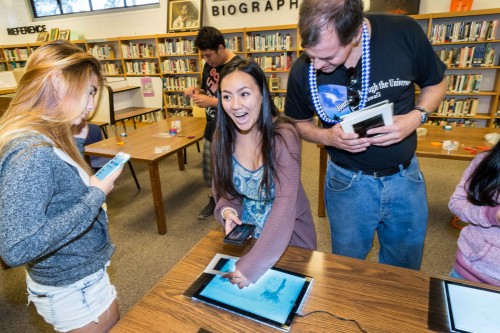
NOAOʻs Robert Sparks demonstrated polarization for students at Waiākea High School using polarized filters.
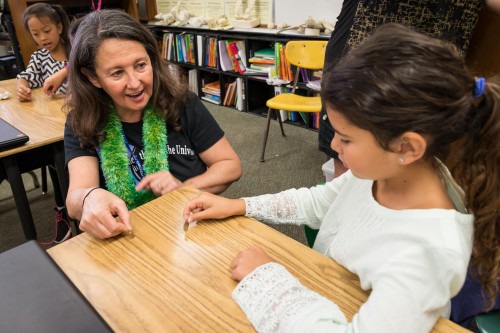
NASA SSERVI director Yvonne Pendleton used coin faces to help students visualize how the moon rotates as it orbits the Earth, keeping the same side facing the “Earth”.
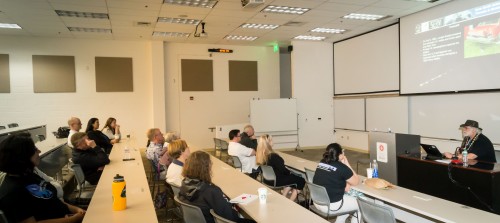
NASA SSERVI Astronomer Brian Day (right) lectured about the prevalence of Near Earth Asteroids (NEA), their past history of devastating impact on the Earth, and what we can do about them in the future.
Thursday-Career Panel and Building Galileoscopes
On March 10th, Doug Simons, Director of Canada-France-Hawai‘i Telescope (CFHT) facilitated a career panel for students at Waiākea High School. The panel featured local employees from CFHT and Gemini North, who shared their personal stories, as well as answered questions from students about observatory careers.
Thursday evening, Robert Sparks from the National Optical Astronomy Observatory (NOAO) led a workshop in building Galileoscopes for middle school students and their families. Groups built their Galileoscopes from scratch and were able to take them home afterwards to look at the night sky!
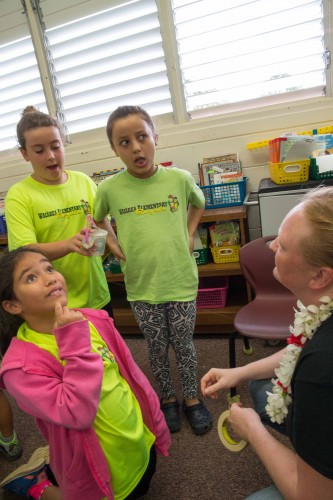
Gemini Software Engineer Angelic Ebbers challenged groups of students at Waiākea Elementary to put their engineering skills to the test in an exercise called “The Zip Line Ping Pong Ball Challenge.”
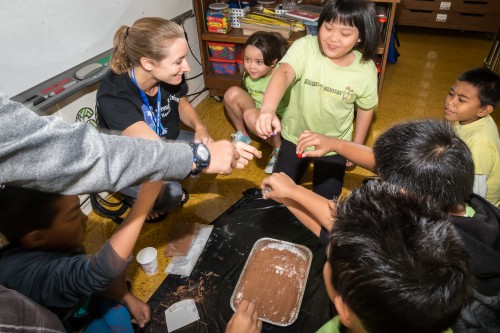
Subaru astronomer Joanna Bulger (black shirt) showed students from Waiākea Elementary School how impact craters from meteoroids are formed and had them create their own craters.

Students from Intermediate Schools in the Hilo-Waiākea district and their families built Galileoscopes in a workshop put on by NOAOʻs Robert Sparks.
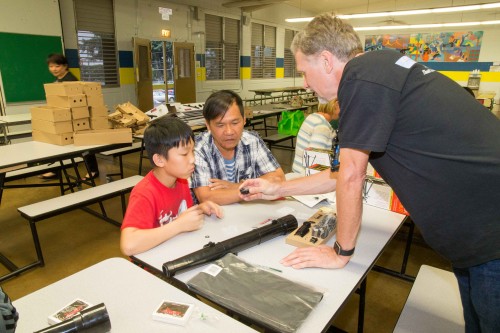
Gemini PIO staff Peter Michaud (right) checked this groupʻs eyepiece and made sure the lenses were correctly oriented.
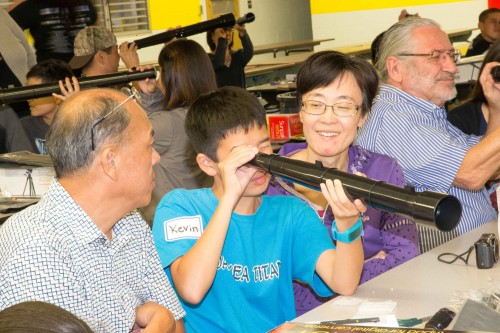
Once the eyepieces are made, itʻs just a simple matter of sliding them into the Galileoscope before testing out their magnifying power!
Friday-Last Day of Classroom Visits
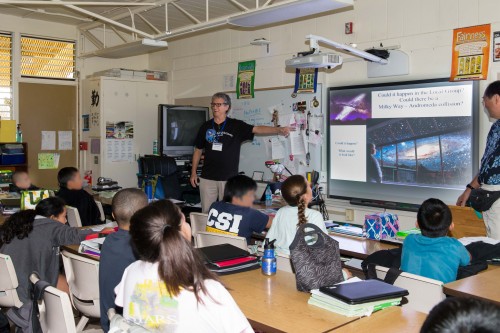
Gemini Astronomer Tom Geballe lecturing about the possibility of the Milky Way and the Andromeda Galaxy colliding.

